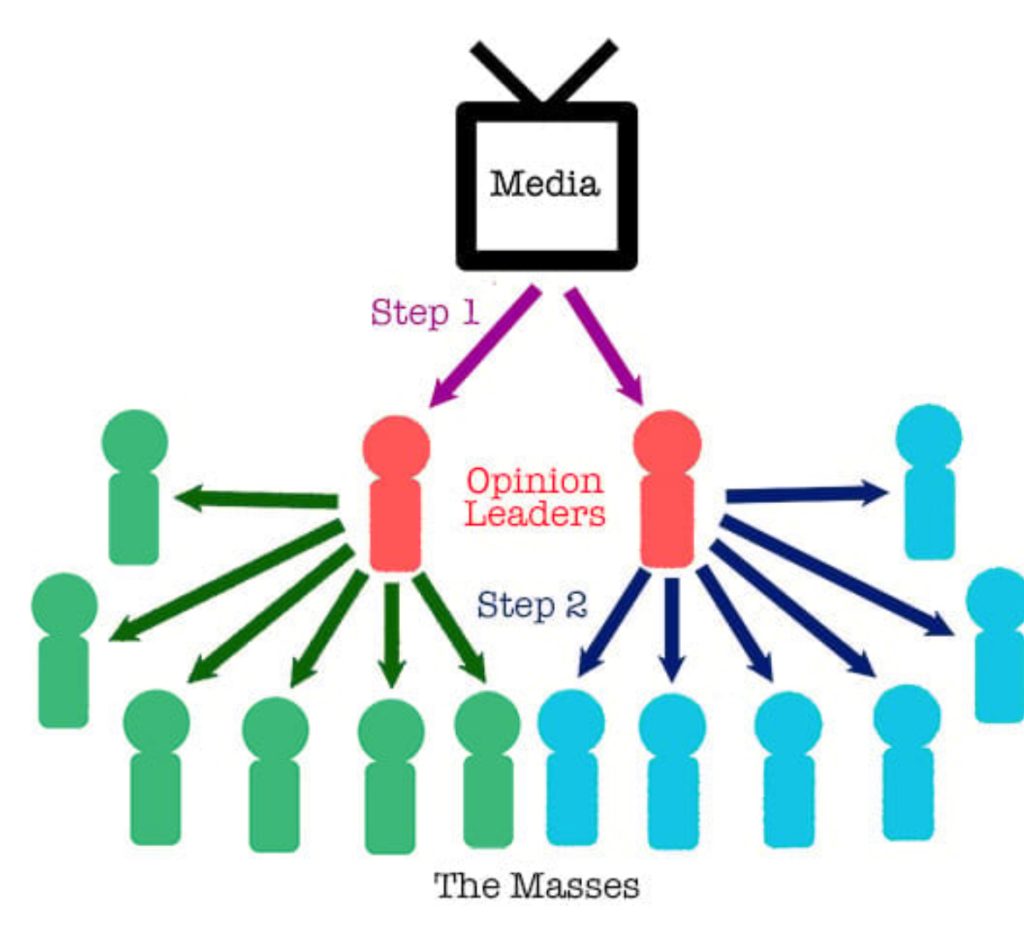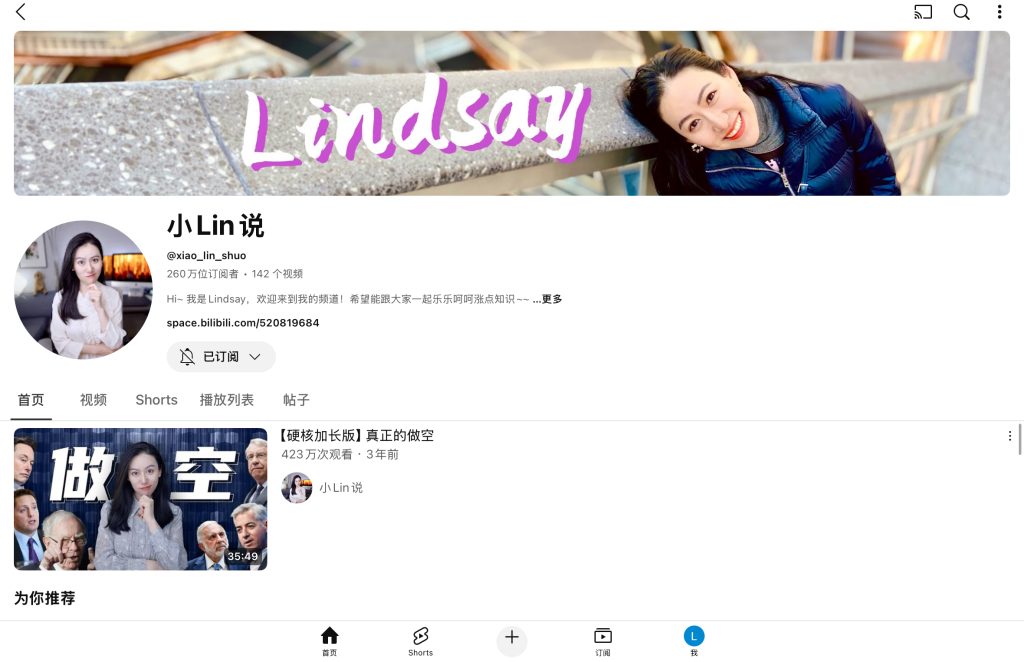Start with a question: which of the things you bought recently did you buy because you saw an ad, and which did you buy because a blogger you follow recommended it?
Think carefully ,Are our purchasing decisions really driven by our own needs, or are they shaped by advertising and guided by the influencers we follow?
What explains this is a set of dynamics first identified in the 1940s but still highly relevant today: The two-step flow of communication.

Image source: Simply Psychology, “Two-Step Flow Theory of Communication” by Olivia Guy-Evans.
The Two-Step Flow Theory, first developed by Paul Lazarsfeld and Elihu Katz in the 1940s, challenges the assumption that media messages directly influence the public. Instead, they argued that media effects are mediated through “opinion leaders” who interpret and pass on information to others (Katz & Lazarsfeld, 1957).
In the 1940s, during a U.S. presidential election, researchers found that voters’ choices weren’t really shaped directly by news or advertisements. Instead, people tended to listen first to those around them who were better informed or had stronger opinions — such as community leaders, friends, or journalists — and were then influenced by what they said (Katz & Lazarsfeld, 1957; Nisbet & Kotcher, 2009).
From this discovery came a new understanding of how information spreads: it doesn’t go straight from the media to the public, but rather moves in two steps.
First, the media reach a small group of “opinion leaders.”
Then, these opinion leaders interpret, filter, and pass the information on to a wider audience through their own social networks.¬Ý(Katz & Lazarsfeld, 1957).
If we look at it today, this theory actually makes even more sense than it did back then.
In the age of social media, advertisements, news, and brand messages are often picked up first by KOLs or influencers.(Nisbet & Kotcher, 2009)
They reframe the information in their own style, making it feel more personal and relevant to their followers‚Äô interests.¬Ý(Dubois & Gaffney, 2014).
Because followers already trust them, they‚Äôre more easily persuaded and influenced forming a new kind of communication and consumption chain in the digital world.¬Ý(Freberg, Graham, McGaughey & Freberg, 2011).
So where do today’s opinion leaders actually appear? Let me share a few examples from my own observation.
1.
When a tech blogger reviews a new smartphone, millions of followers may base their purchase decisions on that review.
They buy not necessarily because they need the phone, but because someone they trust highlights its value.
It’s this trust that often drives them to make the purchase.
When you buy a cosmetic product, it may be because every influencer you follow has purchased it and showcased their real experience and results in a video.
The experience and results they share influence you or spark your desire to get the product.Because of the trust between you, you feel that your own experience and results might be the same as theirs.
3.
For some complex social news or academic topics, we often watch videos by knowledge-focused bloggers to get a better understanding.
They turn hard-to-follow information into interesting, easy-to-understand videos, sharing their views in a style and language we enjoy and can relate to.
At the same time, they greatly shape how we see these issues, which is why we can consider them key opinion leaders in the world of information and ideas.

Modern two-step flow theory tells us that even in today’s media-saturated age, we still rely on people we trust to filter and interpret information for us.
So, coming back to our topic, our following list might already be shaping our information world.And then, could it be that we have also become someone else’s opinion leader?
Reference List
Katz, E. & Lazarsfeld, P.F., 1957. The Two-Step Flow of Communication: An Up-to-Date Report on an Hypothesis. Public Opinion Quarterly, 21(1), pp.61–78.
Nisbet, M.C. & Kotcher, J.E., 2009. ‘A Two-Step Flow of Influence? Opinion-Leader Campaigns on Climate Change’. Science Communication, 30(3), pp.328–354.
Dubois, E. & Gaffney, D., 2014. ‘The Multiple Facets of Influence: Identifying Political Influentials and Opinion Leaders on Twitter’. American Behavioral Scientist, 58(10), pp.1260–1277.
Freberg, K., Graham, K., McGaughey, K. & Freberg, L.A., 2011. ‘Who Are the Social Media Influencers? A Study of Public Perceptions of Personality’. Public Relations Review, 37(1), pp.90–92.


I found it really helpful how you used familiar examples from our own daily lives and social media habits to illustrate your point. I definitely interact with a lot of media like this, or similar online content like restaurant reviews, travel guides, etc. And without even thinking about just how often the recommendation or information I’m absorbing is from an “opinion leader”! Like you, it makes me wonder how intentional that spread of information is, as in, am I dictating the content I consume because of what I choose to interact with or is it being dictated to me by an algorithm? It also made me think about how a lot of successful brands only have to be associated with a famous name to become popular/desirable (e.g., celebrity alcohols, Robert De Niro’s Nobu, Rihanna’s Fenty Beauty), even if the celebrity has little to no part in actually creating or producing the product. They become these opinion leaders driving us toward certain products and a lot of us don’t even think twice about it. Really interesting! -Thalia Mott
Thanks, Thalia! I totally agree it’s so interesting how algorithms and opinion leaders shape what we see online. The celebrity brand example you mentioned really shows how influence has become invisible in our daily lives. It reminds me how relevant the two-step flow theory still is today.
I totally agree with what you said. For me, it is true that most of the time I look for the opinions of KOLs on social media platforms because I believe that they are experts in their own fields, so their advice must be valuable and trustworthy. Thanks to their advice, most of the time I had perfect experiences. However, sometimes I do purchase something I don’t need just due to the
recommendation of the influencer I follow. Moreover, to some extent, we might become trapped in an information cocoon because of recommendation algorithms. Since we always receive similar content from our favourite opinion leaders, we might miss out on opposing viewpoints, like when we want to make a purchase. In terms of the question you left at the end, I think we might have become someone else’s opinion leader. Since most people in the world have their own talents or areas they are more familiar with than others, we might have experienced situations where someone asked for our advice or we simply shared our experiences with them, and that is what opinion leaders do.
I found this podcast really insightful — it made me realize that our choices on social media aren’t as free as they seem.
The influencers we trust often shape our decisions without us even noticing.Even though the Two-Step Flow Theory was proposed decades ago, it feels more relevant than ever in today’s algorithm-driven world.—YiyangZhou(Lisa)